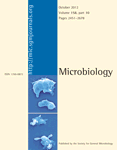Manuka Honey is Bactericidal Against Pseudomonas aeruginosa
and Results in Differential Expression of oprF and algD
Microbiology, October 2012
The presence of Pseudomonas aeruginosa in surface wounds is
of clinical significance and can lead to persistent infections. Manuka honey
has gained ground in clinical settings due to its effective therapeutic action
and broad spectrum of antibacterial activity.
In this study, the effect of manuka honey on P. aeruginosa
was investigated using MIC, MBC, growth kinetics, confocal microscopy, atomic
force microscopy and real-time PCR. A bactericidal mode of action for manuka
honey against P. aeruginosa was deduced (12% w/v MIC; 16% w/v MBC) and
confirmed by confocal and atomic for microscopy, which showed extensive cell
lysis after 60 minutes exposure to inhibitory concentrations of manuka honey.
The inability of honey treated cells to form micro-colonies was demonstrated
and investigated using Q-PCR for three key micro-colony forming genes: algD,
lasR, and oprF. algD expression increased 18-fold whereas oprF expression
decreased 8-fold following honey treatment; lasR expression remained unaltered.
These findings confirm that manuka honey is effective at inducing cell lysis
and identifies two targets, at the genetic level, that might be involved in
this process.

No comments:
Post a Comment